UNC2891 used a 4G Raspberry Pi and Linux rootkits to breach ATM networks, exposing flaws in banking infrastructure.


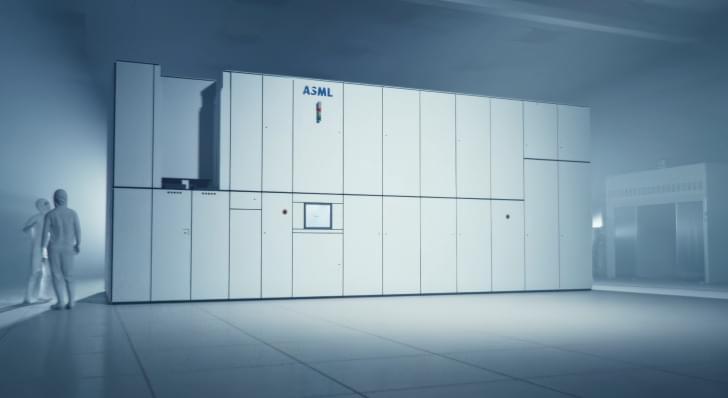
The Dutch chip equipment manufacturer will be exempted from the new US tariffs, allowing chipmakers like TSMC and Samsung easy access to lithography machines in America.
Well, the US and EU recently concluded on a trade deal, setting the tariff rates to the “baseline” 15% figure, along with potential ‘hundreds of billions’ in investments by the EU into America’s energy sector. However, there are tariff exemptions with specific categories, and one of them includes semiconductors, according to a statement released by the European Commission. This means that US companies could import chip equipment and essentials into the nation without paying the extra costs to the government in form of tariffs, and this means great news for the likes of Samsung and TSMC.
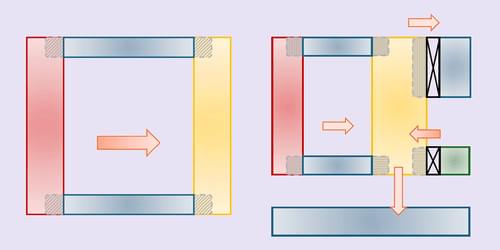
Many quantum technologies function only at ultralow temperatures. Managing the flow of heat in these systems is crucial for protecting their sensitive components. Now Matteo Pioldi and his colleagues at the CNR Institute of Nanoscience and the Scuola Normale Superiore, both in Pisa, Italy, have devised a thermal analogue of a transistor that could facilitate this heat management [1]. Just as a transistor can control electric currents, the new device has the potential to control heat currents in cryogenic quantum systems.
The most common type of transistor has three electrical terminals: the source, the gate, and the drain. Adjusting the voltage applied to the gate alters the strength of the electric current flowing from the source to the drain. In the proposed device, a semiconductor-based thermal reservoir serves as the source, and metallic thermal reservoirs serve as the gate and the drain. A second semiconductor-based reservoir exchanges heat with the source through photons and with the gate and the drain through electrons. Changing the gate’s temperature affects how easily heat flows through the device and, in turn, alters the strength of the heat current flowing from the source to the drain.
Pioldi and his colleagues performed numerical simulations of their device in a realistic setup at ultralow temperatures. They found that a small change in the strength of the heat current coming from the gate could cause the strength of the current between the source and the drain to increase by an amount that was 15 times larger. They say that their device could improve heat management in quantum circuits and thus help optimize quantum sensors, quantum computers, and other temperature-sensitive quantum systems.
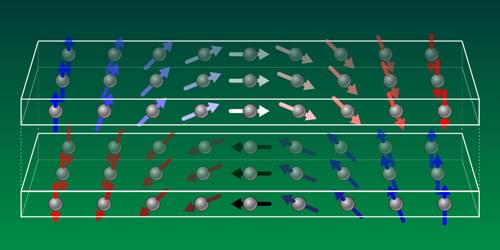
Using ultrafast x-ray pulses, researchers have probed the chirality of spin spirals in synthetic antiferromagnets.
Magnetism is a constant companion in our daily lives. Data storage, sensors, electric motors—none of these devices would function without it. Yet most technologies exploit only the simplest form of magnetic order: ferromagnetism, in which all magnetic moments within a domain align in the same direction. But magnetic order can be far more intricate. In conventional antiferromagnets (AFMs), the magnetic moments align in opposite directions to produce zero net magnetization, a type of order which has several advantages over ferromagnetism in many next-generation technological applications. In more exotic materials, the magnetic moments can twist into spirals, vortices, and other spin structures that might one day be used to store information. Occurring in both ferromagnets and AFMs, these spin structures are defined by their chirality, the direction in which the spins rotate relative to a fixed axis.
The chirality is a key fingerprint of the competing interactions at play in complex magnetic systems. However, observing the dynamics of chirality and magnetization in AFMs has been experimentally challenging, as both can evolve over nanometer length scales and on femtosecond timescales. In a new study, Zongxia Guo from the French National Centre for Scientific Research and colleagues have taken a major step forward by probing both quantities with ultrashort and ultrabright pulses from a free-electron laser (FEL) [1]. The researchers look specifically at spin spirals in an AFM, and they find that—under laser excitation—the chirality and magnetization evolve together in near unison and on significantly faster time scales than is observed for ferromagnets. Such fast spin dynamics in chiral spin structures offers a promising new route for how we will store, transfer, and compute information in the future.
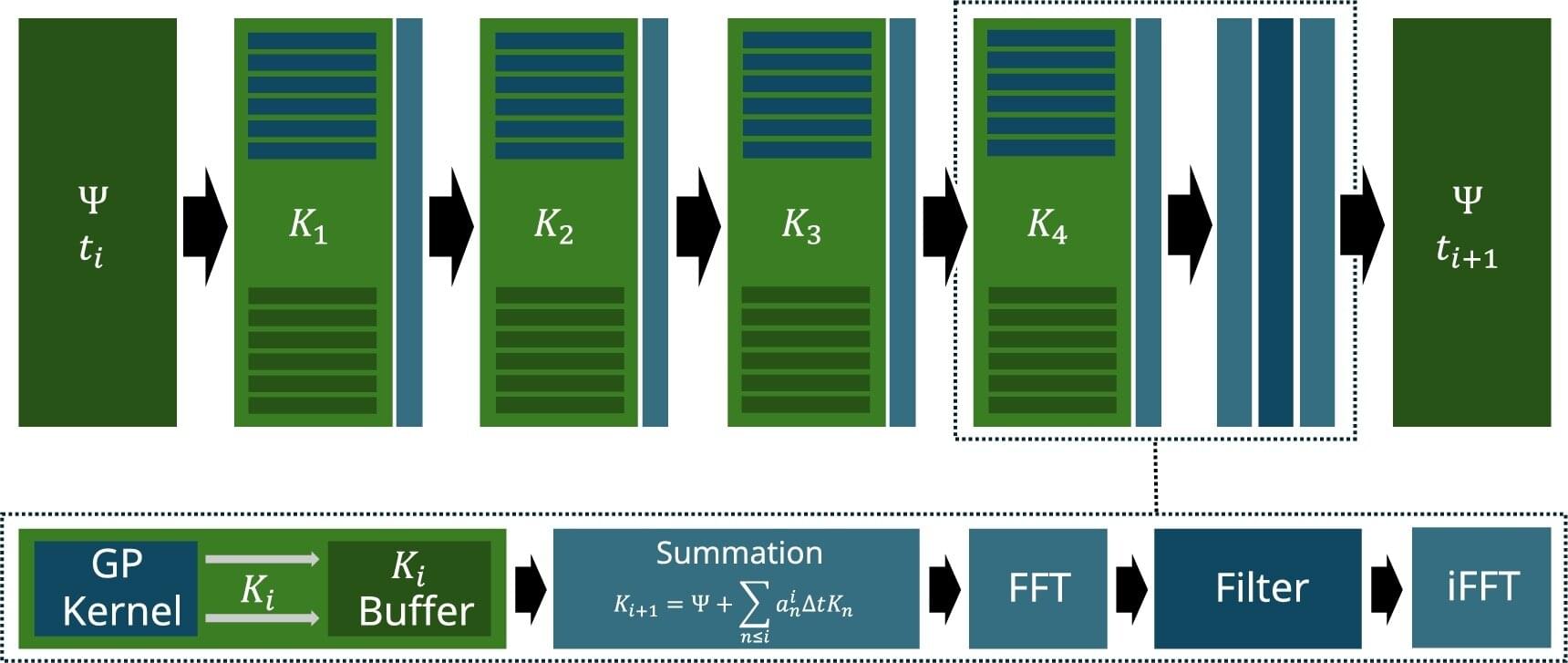
Scientists at the Institute for Photonic Quantum Systems (PhoQS) and the Paderborn Center for Parallel Computing (PC2) at Paderborn University have developed a powerful open-source software tool that allows them to simulate light behavior in quantum systems.
The unique feature of this tool, named “Phoenix,” is that researchers can use it to very quickly investigate complex effects to a level of detail that was previously unknown, and all without needing knowledge of high-performance computing. The results have now been published in Computer Physics Communications.
Phoenix solves equations that describe how light interacts with material at the quantum level, which is essential for understanding and for the design of future technologies such as quantum computers and advanced photonic devices.
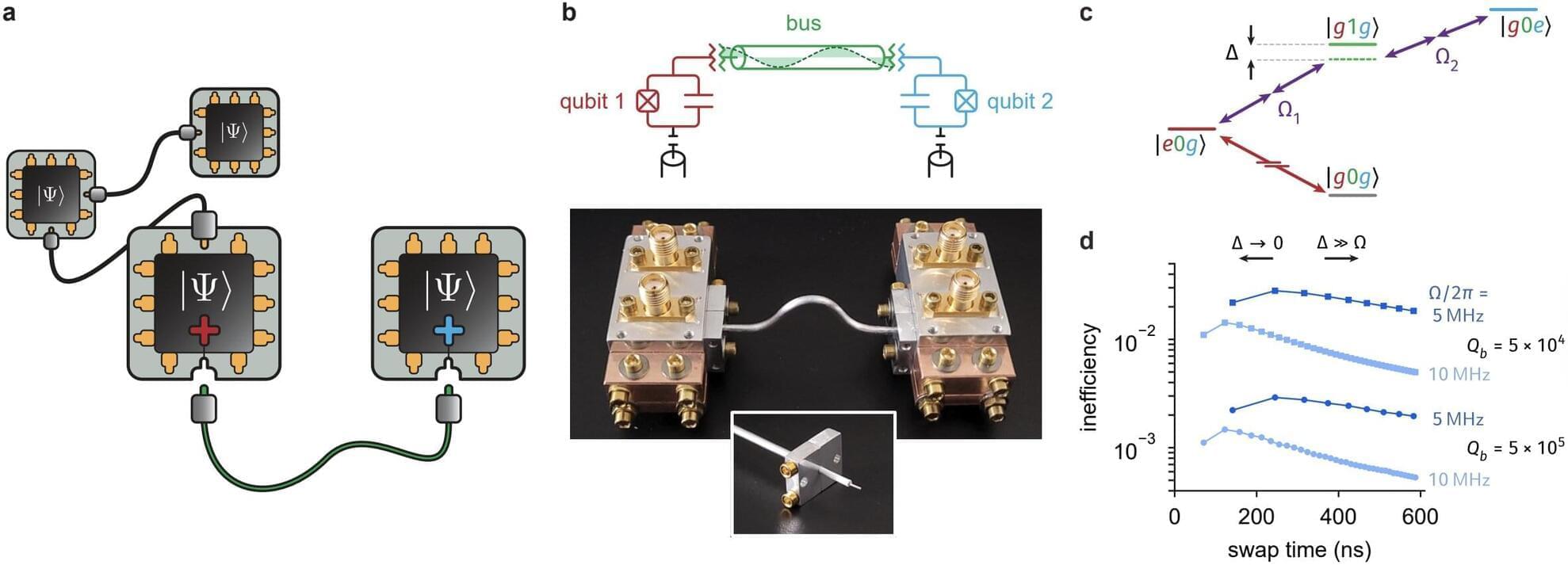
Quantum computers, devices that can perform computations relying on the principles of quantum mechanics, are expected to outperform classical computers on some types of optimization and processing tasks. While physicists and engineers have introduced various quantum computing systems over the past decades, reliably scaling these systems so that they can tackle real-world problems while correcting errors arising during computations has so far proved challenging.
Researchers at the University of Illinois at Urbana-Champaign recently introduced a new, modular quantum architecture for scaling superconducting quantum processors in a fault-tolerant, scalable and reconfigurable way. Scaling in a fault-tolerant way is required to maintain the quantum effects and conditions necessary to perform long-term quantum computations.
Their proposed system, outlined in a paper published in Nature Electronics, is comprised of several modules (i.e., superconducting qubit devices) that can operate independently and be connected to others via a low-loss interconnect, forming a larger quantum network.
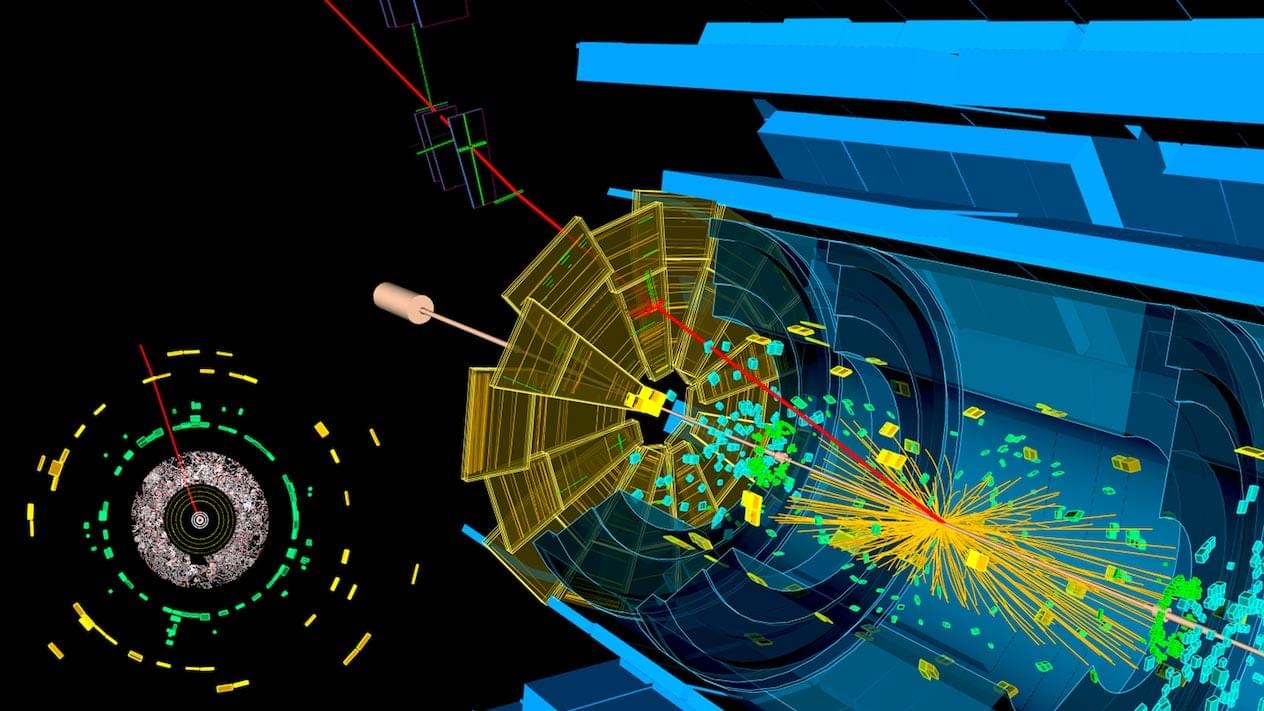
In one of the most extreme environments on Earth—the Large Hadron Collider—normal electronics fail almost instantly. But engineers at Columbia University have created custom microchips that not only survive the collider’s intense radiation but play a pivotal role in unlocking the secrets of the univ



Using mathematical analysis of patterns of human and animal cell behavior, scientists say they have developed a computer program that mimics the behavior of such cells in any part of the body. Led by investigators at Indiana University, Johns Hopkins Medicine, the University of Maryland School of Medicine and Oregon Health & Science University, the new work was designed to advance ways of testing and predicting biological processes, drug responses and other cell dynamics before undertaking more costly experiments with live cells.
With further work on the program, the researchers say it could eventually serve as a “digital twin” for testing any drug’s effect on cancer or other conditions, gene environment interactions during brain development, or any number of dynamic cellular molecular processes in people where such studies are not possible.
Funded primarily by the Jayne Koskinas Ted Giovanis Foundation and the National Institutes of Health, and leveraging prior knowledge and data funded by the Lustgarten Foundation and National Foundation for Cancer Research, the new study and examples of cell simulations are described online July 25 in the journal Cell.